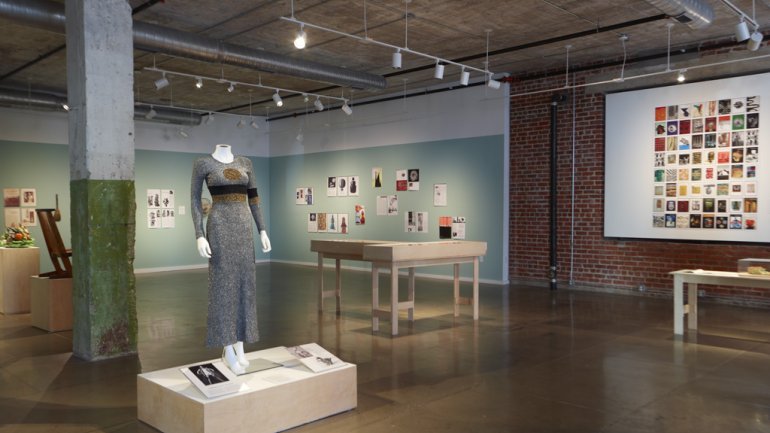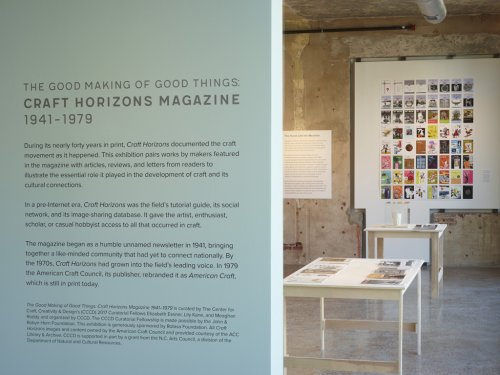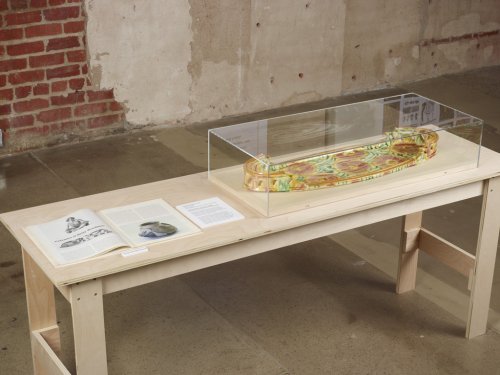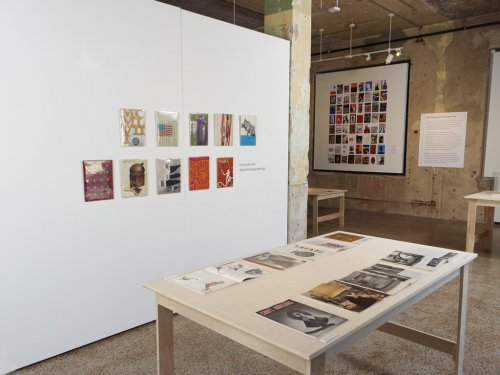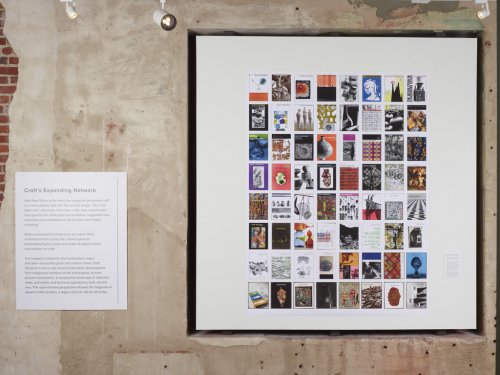"The Good Making of Good Things" Opens at the Center for Craft, Creativity & Design
Craft Horizons magazine, predecessor to American Craft, influenced a generation of makers, educators, scholars, students, and collectors during its 40-year run. Beginning as an unnamed newsletter in November 1941, Craft Horizons quickly became the preeminent publication for information on craft. Although the title and editorial direction of the magazine changed in 1979, Craft Horizons has continued to inspire and inform the field to this day.
A new exhibition at the Center for Craft, Creativity & Design (CCCD) in Asheville, North Carolina, "The Good Making of Good Things: Craft Horizons Magazine 1941–1979," curated by Elizabeth Essner, Lily Kane, and Meaghan Roddy, pairs works by makers featured in the magazine – including fiber artist Ted Hallman, glass artist Harvey Littleton, woodworker George Nakashima, and ceramist Betty Woodman – with articles, reviews, and letters from readers to illustrate the essential role it played in the development of craft and its cultural connections.
"The Good Making of Good Things" is the first of three exhibitions to be presented as part of the CCCD's 2017 Curatorial Fellowship, a yearlong program that gives emerging curators a platform to explore and test new ideas about craft. We asked CCCD curatorial fellows Essner, Kane, and Roddy to tell us a little more about their vision for "The Good Making of Good Things." Here's what they had to say.
What was the impetus for this exhibition? Why focus on Craft Horizons?
Elizabeth Essner: We’ve all been collecting issues of Craft Horizons for years. Paging through the magazine is like watching the story of craft unfold in real time. So when we found out about the call for emerging curators at the Center for Craft, Creativity & Design, we jumped at the opportunity to shed light on the magazine.
What we realized is that many of the questions we ask today about craft have been answered in different ways by the generations before us in the pages of Craft Horizons. The magazine became a space (perhaps the space) where everyone – critics, craftspeople, readers – weighed in on the field. In many ways, it was the craft internet before there was an internet.
Lily Kane: But we were surprised by how many people had never heard of Craft Horizons. We wanted to give contemporary audiences a chance to discover the magazine. Looking back can be an important step in moving forward.
Talk about the objects that are included in the show. Why were they, in particular, chosen?
Meaghan Roddy: What’s exciting about “The Good Making of Good Things” is that we’re able to present original magazine articles along with works by the makers featured in them. It’s a chance to see objects in context with history as it was happening.
For example, in a 1976 letter to the editor, a reader critiqued George Nakashima’s Conoid Chair design. In the next issue, Nakashima himself wrote a rebuttal. We’ve included both letters to the editor along with a Conoid Chair so the viewer can be part of that conversation.
This particular find was great because it involves one of the most celebrated woodworkers of the 20th century engaging directly with a reader from the general public. The magazine was really for, by, and about everyone in the field.
LK: Craft Horizons was deeply inclusive in its view, thanks to longtime editor Rose Slivka. For example, a piece that might be seen as a bit of a surprise is a dress by fashion designer Rudi Gernreich. His work was part of a 1968 article on “Body Covering,” an avant-garde exhibition of fashion at the Museum of Contemporary Crafts.
EE: One of my favorite things about Craft Horizons is how often craftspeople wrote about each other’s work. For instance, a porcelain Light Gatherer by ceramist Rudolf Staffel is paired with his interview by Paula and Robert Winokur, fellow ceramists, former students, and longtime friends. The article and object come together to paint portrait of the artist, and the rich community of makers fostered in the pages of Craft Horizons. To reflect how that community has evolved today, we’ve included contemporary work by Jaydan Moore and Tanya Aguiñiga who, fittingly, have both been featured in American Craft.
What discoveries did you make in putting together the exhibition? What surprised you?
MR: There were quite a few surprises in the course of our research. Especially how many major figures in 20th-century culture were part of the magazine – whether on the editorial board, writing a column or letter to the editor, or as a graphic designer. This includes people that wouldn’t be thought of in a craft context like the poet and critic John Ashbery or artist Louise Bourgeois.
Craft Horizons is full of makers ripe for rediscovery. For example, Al Ching, a fantastic metalworker and former professor at California State University, Fullerton, was included in several issues from the 1960s and 1970s. We tried for months to track down his family or a piece of his work but eventually hit a dead end. It was sobering how many craftspeople have been lost to obscurity, despite their talent.
Also surprising was how instrumental women were to the magazine. Craft Horizons was founded by a woman, the editor-in-chief for twenty years was a woman, the board started with a female majority, and editorial coverage was largely equal for men and women, which is pretty remarkable.
Is craft as envisioned in Craft Horizons still relevant today? What do you think Aileen Osborn Webb would think of today's incarnation of the "craft movement"?
EE: In many ways, Craft Horizons actually foresees today’s interdisciplinary approach where craft is found in so many contexts. It would likely thrill Mrs. Webb that in addition to traditional venues, craft mediums and practices are used in everything from art-making to high-tech design solutions. If she were alive today, I bet she would be in the thick of the internet and all of its avenues for connection. My guess is she’d be very pleased with how our generation continues to keep craft relevant.
Craft Horizons seems to have been so central to its readers' experience. With media as fragmented as it is today, do you think any contemporary magazine or website could be as essential to craft enthusiasts?
LK: When we talk about Craft Horizons as the "craft internet," we’re also referring to its exceptional geographic reach and democratic coverage of
both traditional media – clay, fiber, metal, glass, wood – as well as everything from calligraphy to kites. This centralized experience could probably only exist at a time before the internet. That said, the way that the internet gives voice to many is, yes, fragmented, but it is definitely an essential way people connect to craft today – and it has its own pluses, like video tutorials!
What do you hope visitors to the exhibition will take away from the exhibition as a whole?
LK: First and foremost, we hope the exhibition will pull the magazine into contemporary conversations about craft. I also hope people get excited about editor Rose Slivka's role in craft history; a revival of interest is well-deserved and overdue. Lastly, I hope the exhibition gets people thinking about the many possibilities of making, something central to Craft Horizons. Appreciating the handmade can connect people in elemental and beautiful ways, which we could probably all use more of in our increasingly digitized world. Our title actually comes from a Slivka quote. She wrote of “the good making of good things,” which, for her, was “a palpable chain through which each human being touches the other and is known through hand and craft.”
"The Good Making of Good Things: Craft Horizons Magazine 1941-1979" is on view at the Center for Craft, Creativity & Design through May 20, 2017.
Every back issue of Craft Horizons magazine is fully accessible online in the ACC Library Digital Collections database.
